Orca mega-pod hunt & kill blue whale: watch the video

On a trip across Australia this week, I planned a sneaky detour to Bremer Bay, Western Australia, having heard about the chance to see orcas here. I had no idea I was about to embark on one of the marine world’s most spectacular and scarcely documented predations.
At 8.30am I steamed out of Bremer Bay with Naturaliste Charters, on the vessel Alison Maree into the strength and might of the Southern Ocean. The weather was fine but an 18 knot wind blew, pushing up a 2.2m swell, and sending many people for the seasick tablets. Luckily, this made for prime orca spotting weather, apparently.
It took a full 90 minutes to steam to a place called the ‘hotspot’, an area where the Australian continental shelf drops away to a depth of 1000m, the water becoming a menacing deep blue/black. It’s an area known for its high biological diversity and denseness of nutrients, hence attracting a seemingly permanent population of orcas.
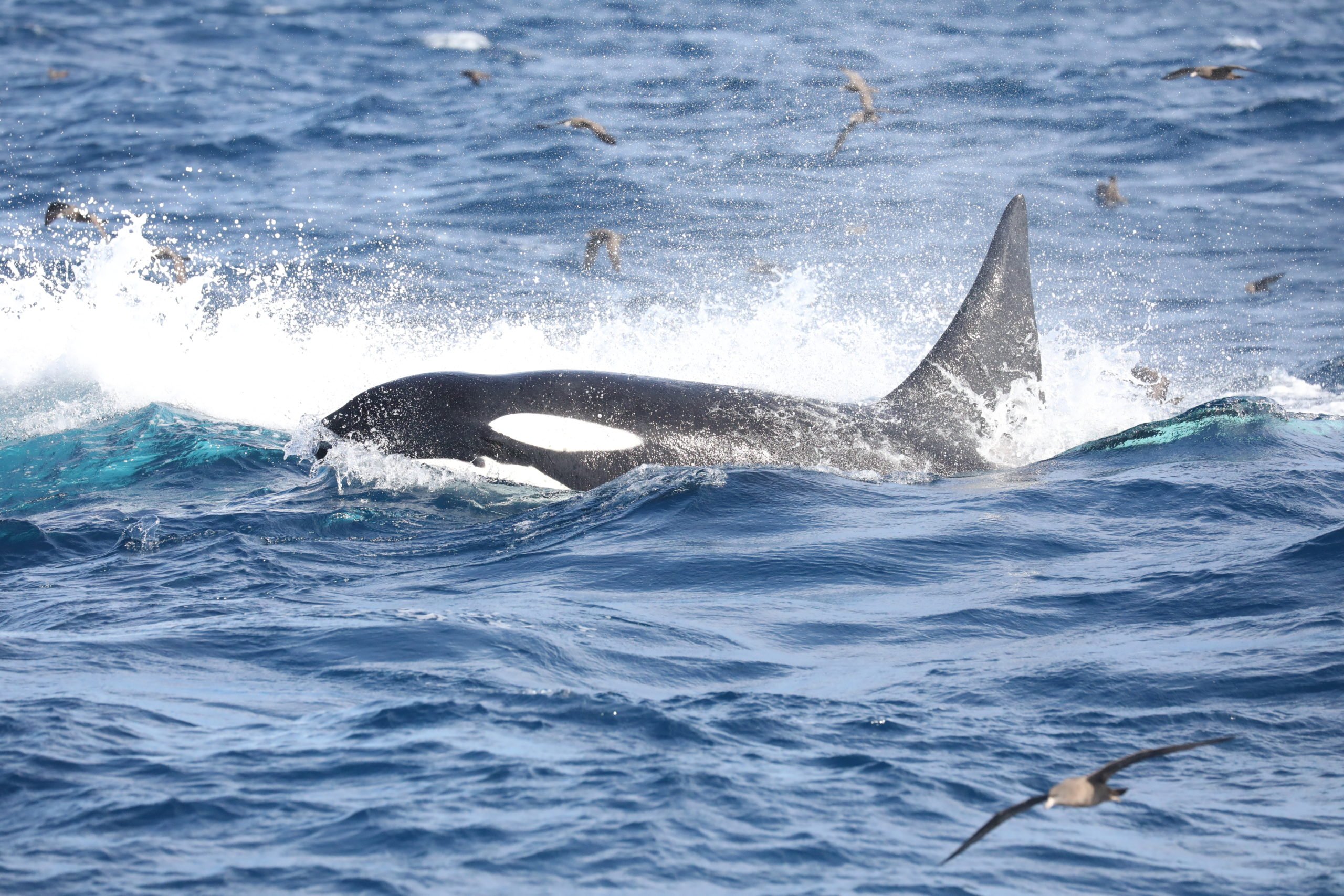
Almost immediately we came across two pods of killer whales that seemed very relaxed and appeared to be just cruising around. We all enjoyed the thrill of being amongst these remarkable animals, most of us for the very first time.
But as things started to heat up, animals started to ‘surge’ through the water around us and it was clear, something was up. The birds were also alerted well before we were.
Orcas seemed to be coming in from everywhere and surging all around us, and then the pace picked up dramatically – they were on the move.
A shout came from the wheelhouse, “blue whale at 11 o’clock”.
“What?”
“Did he say blue whale?
“Surely not!”
As the captain confirmed the blow of water was indeed from a blue whale, little did we know that we were about to witness a 3-hour orchestrated and meticulous hunt – a rarely recorded predation of blue whale by orca.
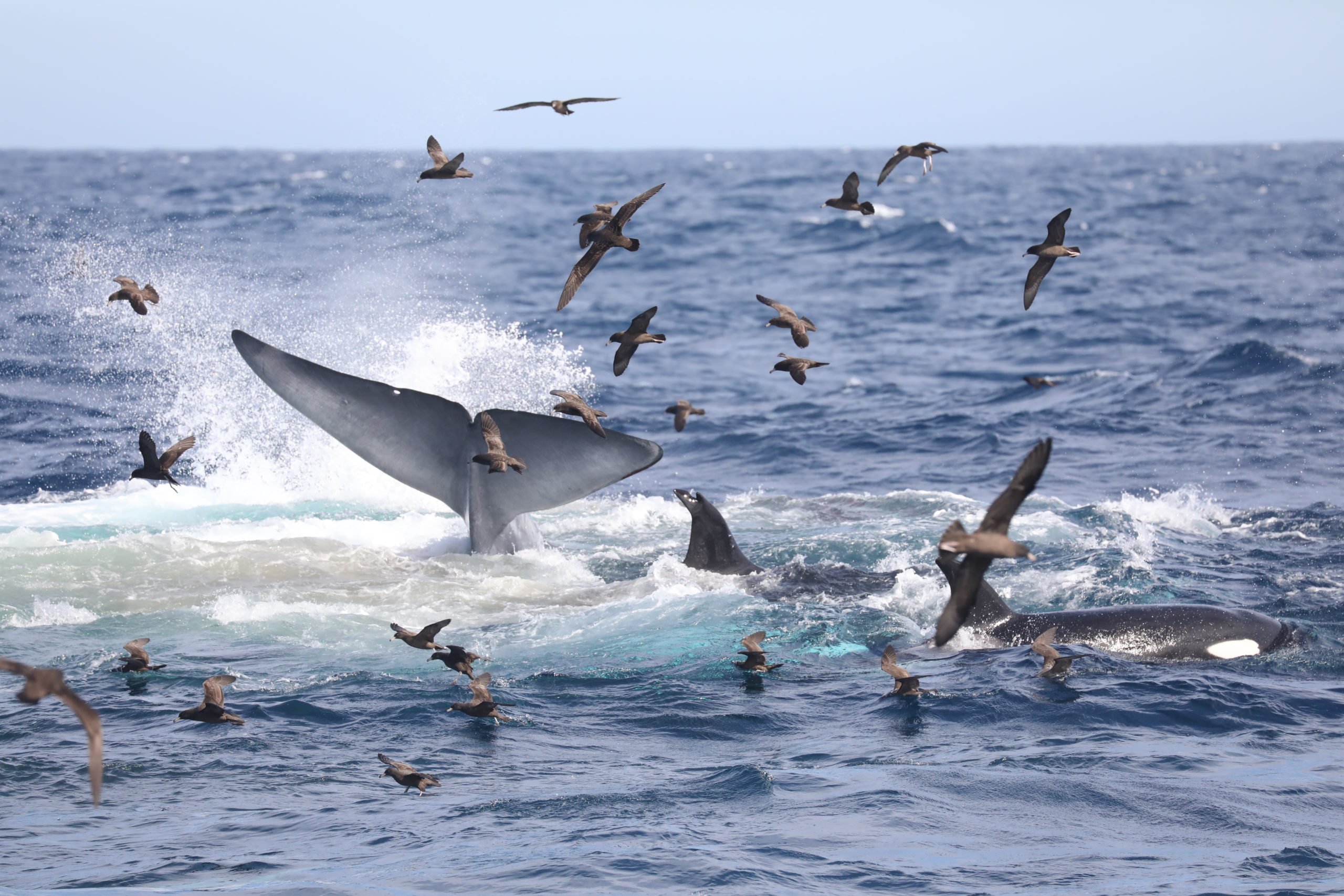
Slowly but surely over the course of the next couple of hours, pods of orca called to other pods in the area – surging, tail slapping, breaching, clicking and communicating, signalling for all to come in to assist. It would be quite a task to corral the blue whale from a depth of 1000m back to the continental shelf and a more manageable 80m where they could feed successfully on their prey. If they were to kill the whale when out so deep, the carcass would drop to the bottom, below their range for feeding. At 80m, it would be easy to carve the carcass up and share between the pods.
It was a heartbreaking scene. We all know that this is the circle of life, but to witness the world’s largest whale being brought down by these orcas, welll… it’s something I’m acutely aware only a few people in the world would ever see. In fact, this exact event has only been recorded twice, worldwide. Today, I was witnessing the third.
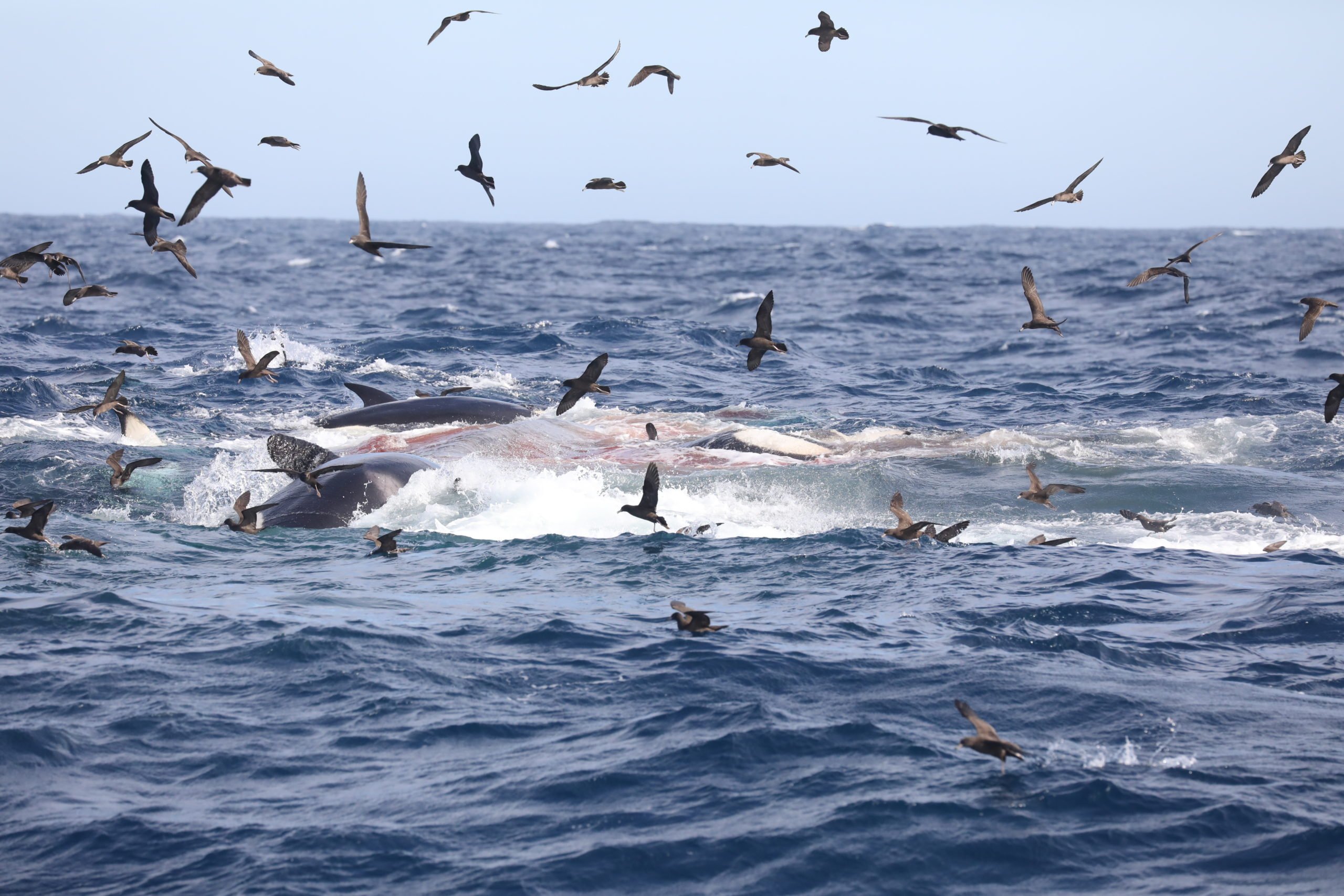
Over the next couple of hours, we witnessed the calculative hunting skills of these killer whales. Our onboard marine biologist and crew could identify some of the animals by their tail notches, so we could easily track what was happening. Groups of six or eight orcas would move in heavy and hard onto the whale, pushing, jostling and rolling above the whales blowhole in an attempt to drown it. Then, in need of a rest, they would drop back behind us and a new six to eight orcas would come in. And so it went on relentlessly, for hours, the blue whale never being afforded a break. Interestingly, baby orcas were also taken in, close to the blue whale, as if nursery training was also taking place.
After more than three hours the first blood was finally drawn. While the juvenile blue whale, approximately 18m in length, gallantly continued to fight, taking last breaths of air and throwing its tail high in the air in a final attempt to escape, the orcas were lunging at its tongue – a delicacy for them.
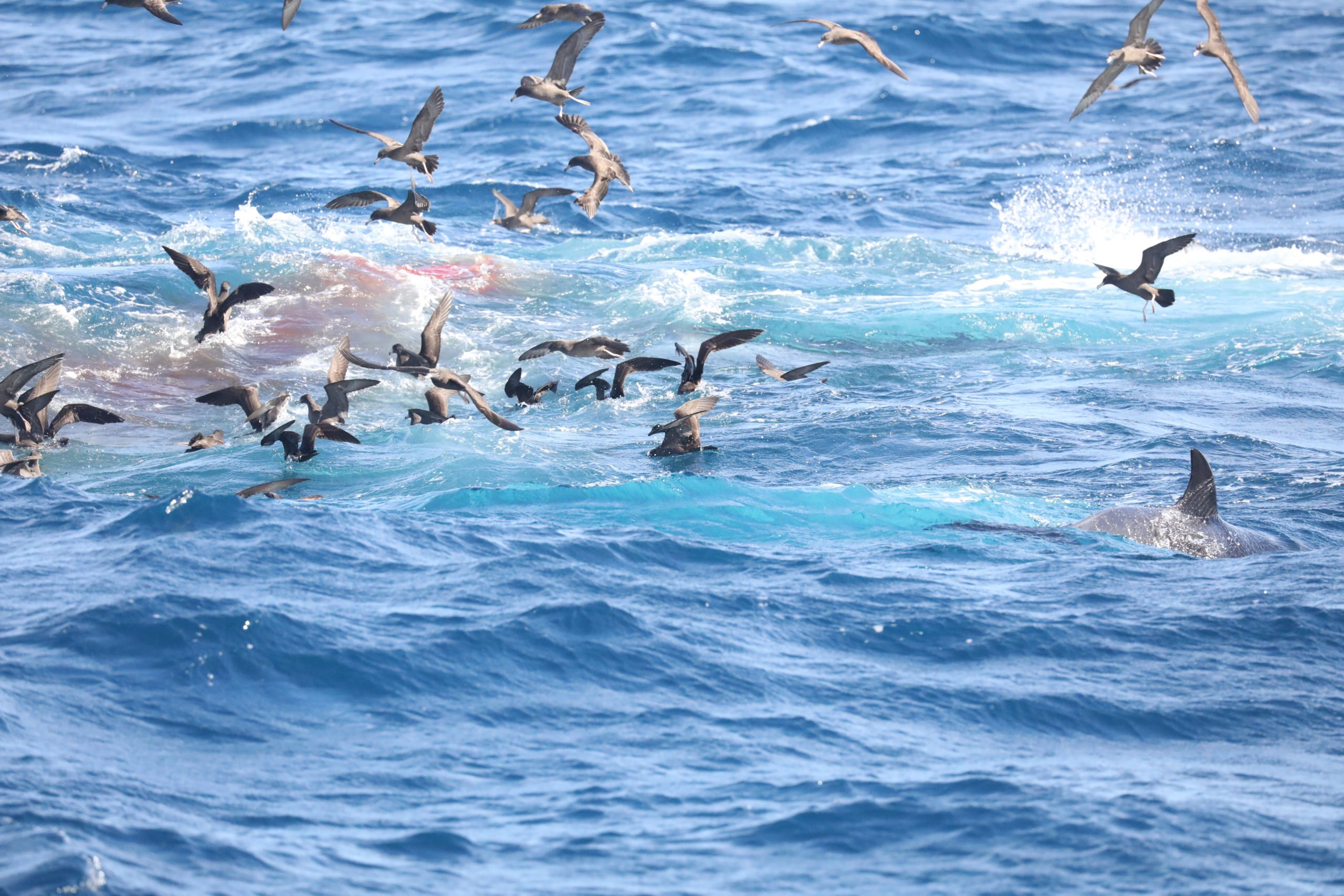
A slick of blood and oil began to spread across the ocean surface, birds squawked and fought over scattered pickings, a hammerhead shark came in for a look but decided it wasn’t a good match for up to 80 orcas, and swiftly left, and a pod of pilot whales also swung by. It was a frenzy of action on the surface. I could only imagine what was going on beneath with orcas also attacking from below.
The fight was over. The blue whale had been defeated and the carcass quickly disappeared. With up to eight adult male orcas and their pods thought to be in the area, large chunks from the carcass were bitten off and rushed back to share with the rest of their families. Orcas were now travelling in every direction and all around us.
We left the area awestruck and with a mix of emotions, as the sun dipped low in the sky and the feeding continued. The oil slick will remain now in the water for weeks perhaps, attracting huge amounts of wildlife to feed, long after the orcas have gone.
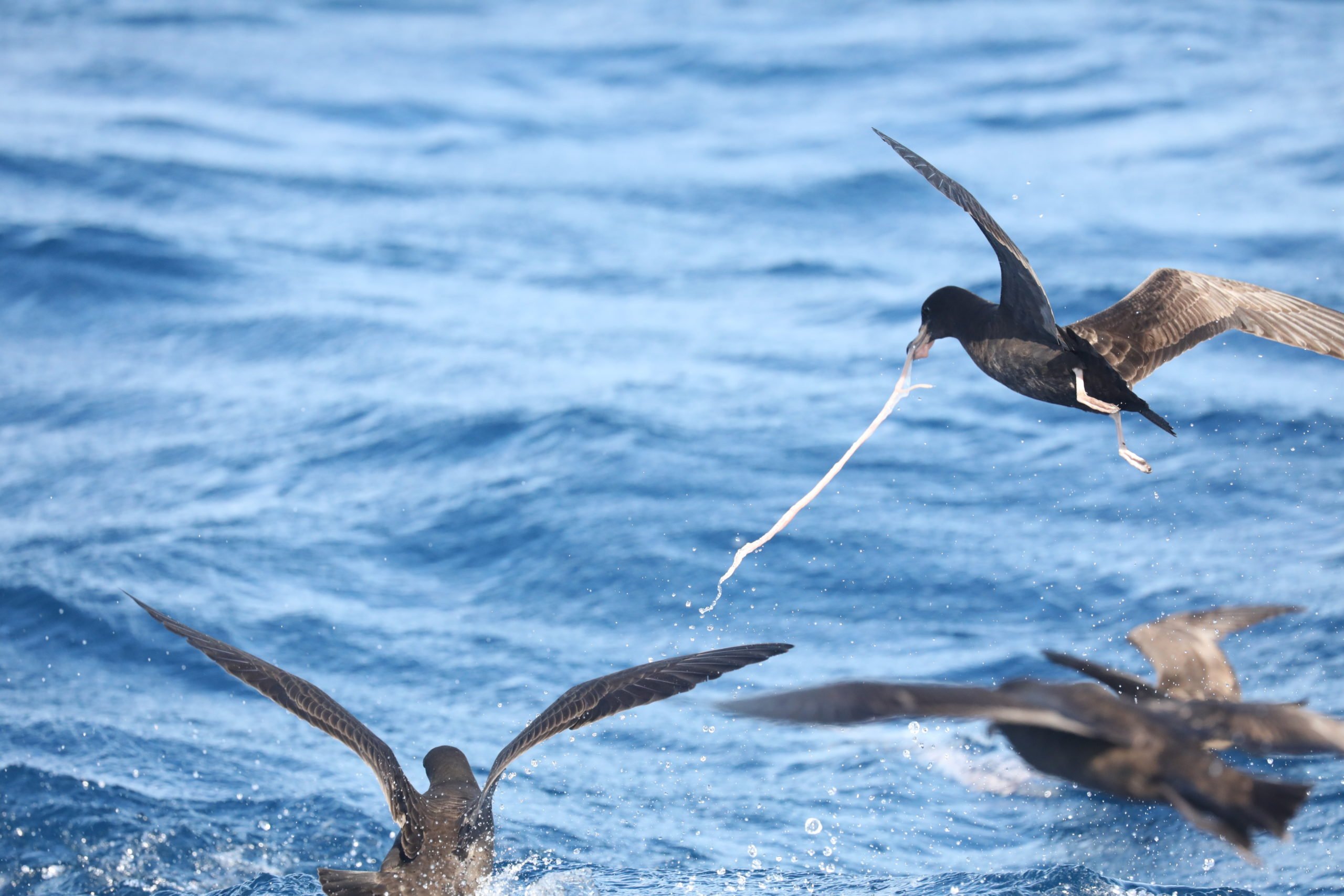
You can find out more about Bremer Bay’s killer whale tours here.




